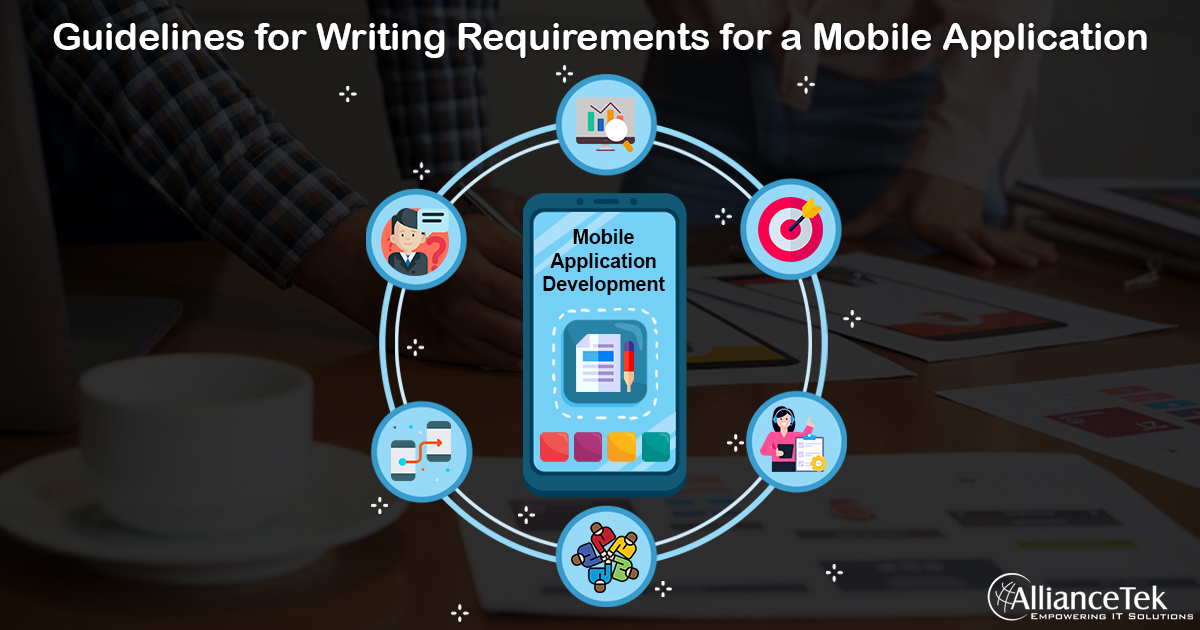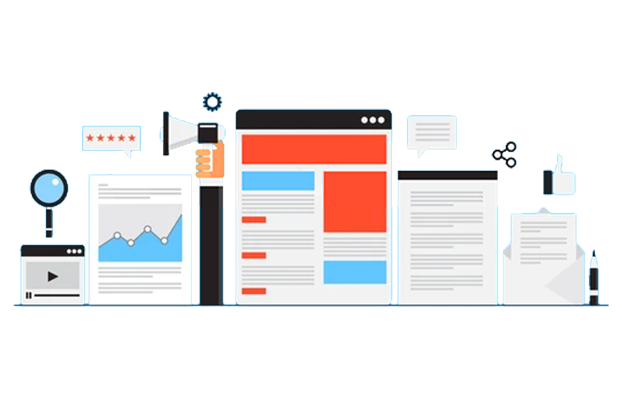No software projects can start and develop without clearly defined project specifications. Actually, the process of writing requirements for a mobile application, for example, takes the most time of the entire development process like writing university theses for writers from best writers online. It is crucial to dedicate thorough attention to ensure the app idea is worthy and find ways to differentiate from competitors on the market.
If we talk about mobile app development, foremost, it is vital to define what platform you would like to submit it to—App Store using iOS, Google Store using Android, or build a cross-platform solution that will be available for both marketplaces. So, further, we would like to take a closer look at the essence of writing requirements and technical documentation for mobile app development and what information these documents need to include.

Goals of mobile app requirements
So the first question we would like to discuss is why mobile app requirements are so pivotal for successful app development and launch. Each mobile application goes through a complete software development life cycle that consists of the discovery stage, architecture, design, development and testing, launch, and maintenance. And the discovery stage, the stage where the requirements are collected, is the most crucial as other stages depend on it. So, the main goals of writing requirements for mobile applications are:
1. Outlining the whole project scope
When writing requirements for a mobile application, it's crucial to outline the entire project scope, including the technologies that will be used, the number of engineers required, the number of hours needed to complete the project, the deadlines for each phase, and approximate cost estimation. Outlining the project scope ensures that everyone involved in the project is aware of what needs to be done, when it needs to be done, and how much it will cost. This information helps to manage the project better, prevents scope creep, and ensures that everyone is working towards the same goals.
2. Providing designers with references
Designers play a crucial role in the success of a mobile application. When writing requirements, it's essential to provide designers with references and suggestions to ensure that the design of the app is aligned with the project's goals. This can include references to similar applications, competitor analysis, or any design guidelines that must be followed. Providing designers with this information helps to ensure that they can create a design that meets the client's expectations and aligns with the project's goals.
3. Depict the goals of the solution
App requirements depict the goals of the solution, and it's important to ensure that they are well-defined and comprehensive. Clear requirements help developers understand what needs to be done and ensure that the app meets the project's goals. Additionally, requirements determine the testing cases needed to deliver a high-grade solution. Testing cases are critical to ensuring that the app meets the project's goals and functions as intended. Well-defined requirements help developers understand the project's scope and goals, leading to a higher-quality product and a better end-user experience.
4. Simplify the process of future code reviews
Documenting each action of developers simplifies the process of future code reviews and its improvements. When each action of the developer is documented, it makes it easier to review the code and understand the thought process behind each action. This can help to identify any errors or inefficiencies in the code, making it easier to improve the code in the future. Additionally, it helps to ensure that the code meets the project's requirements and aligns with the project's goals.
5. Simplify the process of integration of the mobile application
When writing requirements for a mobile application, it's important to consider future integrations. The requirements should be written in a way that makes it easy to integrate new features in the future. Well-defined requirements and clear documentation make it easier to understand the code and how it can be integrated with new features. This helps to ensure that the mobile application can be updated and maintained easily in the future. This, in turn, leads to a better end-user experience and a higher-quality product.
How to write mobile app requirements properly
Generally, software houses have certain templates for writing the requirements depending on the type of solution you need for your business. These templates include the points of pivotal information about the project to start the actual development stage. Here are the core stages and pieces of information mobile app specification documents have to contain.
1. Market research
If you decide to develop a mobile app for your business, the first stage in this process is conducting research on the market and among competitors. It is crucial to ensure that your mobile app idea is unique on the market, will be in demand for your future users, and will be capable of keeping up with the marking rapid changes, trends, and competitors. After the mobile app idea is verified, then it is high time to continue defining the requirements for your future solution. These requirements are commonly based on your ongoing business aims and needs, as well as suggestions from your development team on what features and other staff should be included in your mobile app.
2. Business goals and requirements
When starting a software development project, it's important to recognize that every development process begins with the discovery stage.
During the discovery stage, it's essential to evaluate your business and understand its operations. This includes examining current processes, identifying weak areas, and discovering the main problems faced by your staff on a daily basis.
Once you have identified the main problems, the next step is to convert these problems into solutions that can be addressed through software implementation. This is where the development team comes in - they will work with you to create a software solution that addresses the issues you have identified.
This approach ensures that the software solution that is developed is tailored to your specific needs and addresses the challenges that you face. Ultimately, this leads to a higher-quality product that meets your business needs and delivers tangible results.
3. Technical documents of mobile software project
After the app idea is completely verified based on your business needs and requirements at the moment, the development team is accountable for writing down all your expectations and requirements in the technical documentation of the software project, just like copywriters from the writing service Trust My Paper. Basically, it is the same information converted into a more technical language to be clear for future executors, meaning engineers involved in your project development. Basically, it is the same information about being converted into a more technical language to be clear for future executors, meaning engineers are involved in your project development.
Common project technical documentation includes everything about the project. It contains information about the function that would be included in the mobile app, outlines the members of the app developers, the number of hours that will be required to develop MVP as well as the complete solution required budget, technologies that are going to be used, and so on. Technical documentation is very important for the successful development process and in the next point, we would like to take a closer look at what mobile app requirements are commonly recorded in these documents.
4. Sprints, epics, and user stories of the mobile app development
After the technical specifications of the entire project are collected, analyzed, and written into the project documentation, the next step is dividing the entire project into sprints. Commonly, each sprint is responsible for a certain part of the functionality of the mobile application. In turn, its sprint consists of epics and user stories. Epic is responsible for each separate function of the mobile application.
For example, it can be the registration process. Each epic commonly describes what actions the user needs to do to execute the action and receive the feature they expect in our case—signing in. The same approach is applied to each function and group of functions within the project so that further, the project could be divided into tasks for engineers, including the time, budget, and deadlines for each of them.
5. Designing the mobile app prototype
After you as a client and the development team are completely on the same page and understand the goal of the application and the final solution you expect to receive, the designers are accountable for depicting the wireframes of how your mobile application will function, and how it’s the sign will look like.
Surely, each page design of the mobile application needs to be approved by you and made according to your brand book and your suggestions. If you're not sure that the design for your mobile app will be the most suitable for your business, you can dedicate this task to designers, completely send the received prototypes and make the adjustments if there are some.
To sum up
Writing mobile app requirements is one of the most critical stages in building a successful software solution. It lays the foundation for the entire mobile app development process by establishing an action plan and assigning responsibilities and tasks to each engineer on the team. The requirements provide a clear roadmap for the development team to follow and ensure that everyone is working towards the same goals.
One of the most significant advantages of writing mobile app solution requirements is that they can be variable and change throughout the development process. This allows the development team to make adjustments and pivot the project if needed to ensure that the final product meets the client's needs and aligns with the project's goals.
However, it's crucial to choose a reliable software development partner who can handle changes to the requirements without causing delays or budget overruns. Working with a trusted software development partner can make all the difference in ensuring that the project is completed on time and within budget. With their expertise and experience, they can help to identify potential challenges and provide solutions that will keep the project on track.
Call us at 484-892-5713 or Contact Us today to know more details about the Guidelines for Writing Requirements for a Mobile Application


